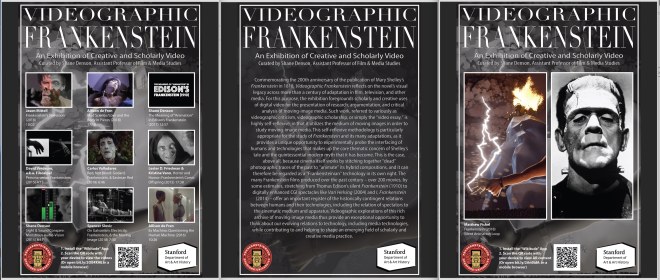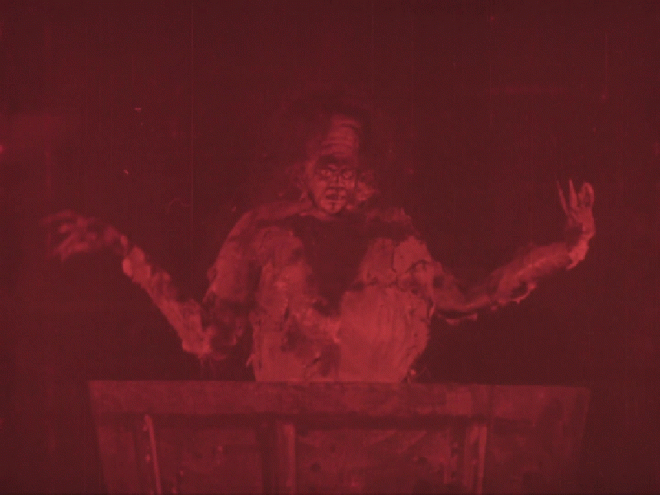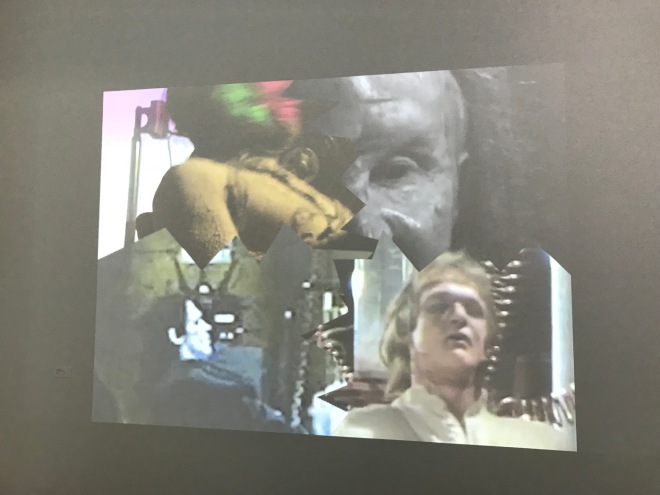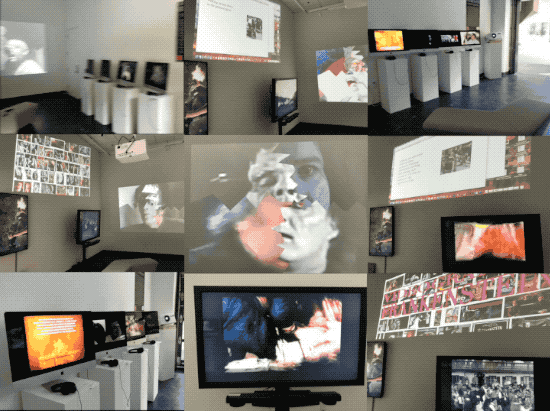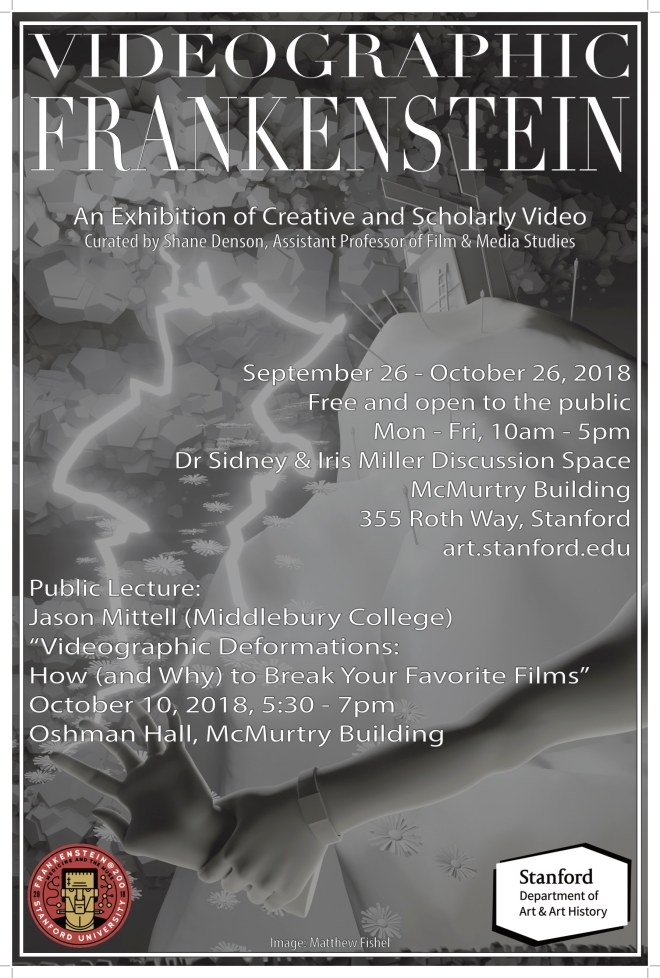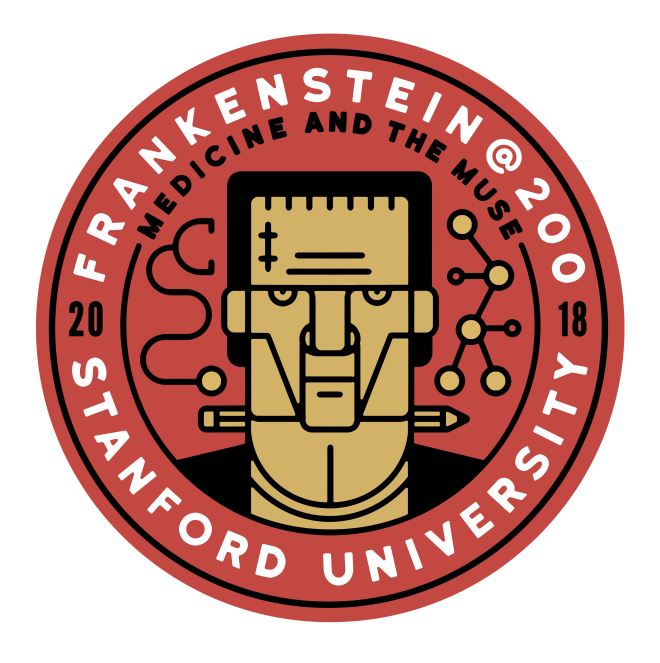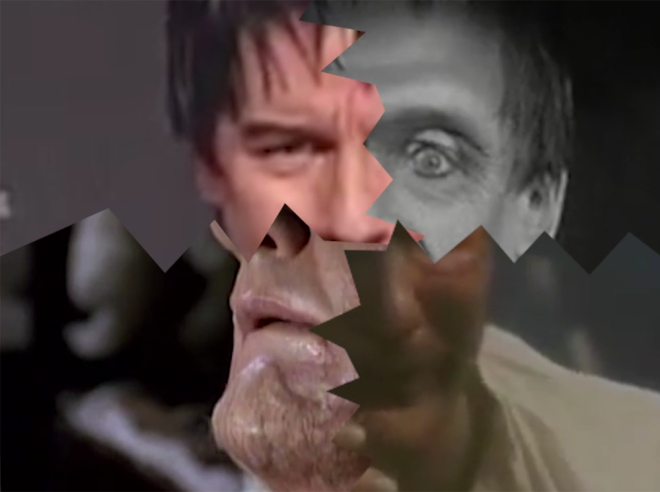
I am excited to announce that the Videographic Frankenstein exhibit, which ran September 26 – November 2, 2018 at Stanford, lives on in an online version — out now in Hyperrhiz 19! There you will find 10 video works on various facets of Frankenstein‘s moving-image legacy, from early film to television and digital animation, along with creators’ statements that reflect on this history and its relations to videographic scholarship, among other monstrosities.
Thanks again to the Stanford Medicine and the Muse Frankenstein@200 Initiative and the Stanford Department of Art & Art History and Program in Film & Media Studies for their generous support of the project.
Thanks also to Helen Burgess, editor at Hyperrhiz, for entertaining the notion of publishing an exhibition of creative and scholarly videos, and for working with me to find the right format.
And thanks, finally, to the contributors for all their hard work: Matthew Fishel, Jason Mittell, Allison de Fren, David Verdeure, Carlos Valladares, Lester Friedman, Kristine Vann, and Spencer Slovic!
Also, be sure to check out the full issue of Hyperrhiz, which is chock full of more excellent scholarly and creative work!
